Tidal bores occur in relatively few locations worldwide. In fact, for bores to occur, there are a few conditions that has to be met: the river must be shallow, must have a narrow outlet to the sea and a broad funnel-shaped bay. The bay must also have large tidal range - typically more than 6 meters between high and low water. The funnel-like shape not only increases the tidal range, but it can also decrease the duration of the flood tide, down to a point where the flood appears as a sudden increase in the water level.

Tourists gather on the bank of the Qiantang River to see the soaring tide in Haining, Zhejiang province, on September 13, 2011.
While tides are stable and arrive like clockwork, tidal bores are less predictable. The development of tidal bores depends on a number of factors, including wind and the depth of the river which can change between seasons. Tidal bores can occur every day, like the tidal bore of the Batang River in Malaysia, called the benak. Other tidal bores, like the Pororoca, in the Amazon river in Brazil, occur during spring tides.
The world’s largest tidal bore occurs along the Qiantang River in Hangzhou, China, where tides reach up to 30 feet and travel at up to 40 kilometers per hour. The roar of the tidal wave can be heard for hours before it bores up the river, and the river's water stays risen for several hours after the bore passes. Known locally as the Silver Dragon, the tidal bore happens during the spring tide with every full moon, but is strongest in the fall. During this period, the Tide-watching Festival is held which attracts up to 170,000 tide-watchers and has been celebrated for hundreds of years. Indeed, the regular occurrence of the Silver Dragon have produced the oldest known tide table in 1056 AD.
The Pororoca is another significant tidal bore that occurs in the Amazon river. The phenomenon that occurs between February and March causes waves up to 4 meters high and travel as much as 800 km inland upstream on the Amazon and adjacent rivers. Its name comes from the indigenous Tupi language, where it translates into "great roar".
Tidal bores can be quite violent, and many bores have had a sinister reputation: the River Seine (France); the Petitcodiac River (Canada); and the Colorado River (Mexico), to name a few. In China, along the Qiantang River banks a number of tragic accidents happen each year. Tidal bores often affect shipping and navigation in the estuarine zone, and can be devastating for wildlife.
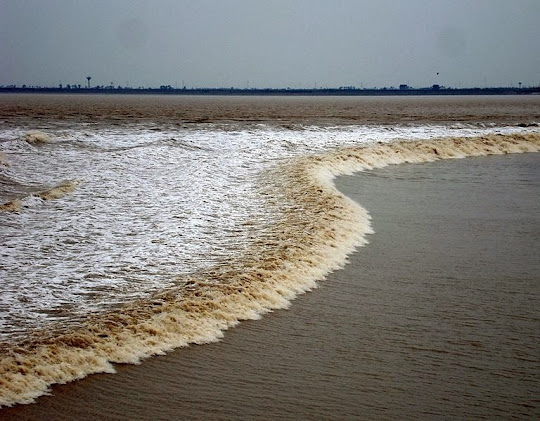
Tidal bore at the Qiantang river.
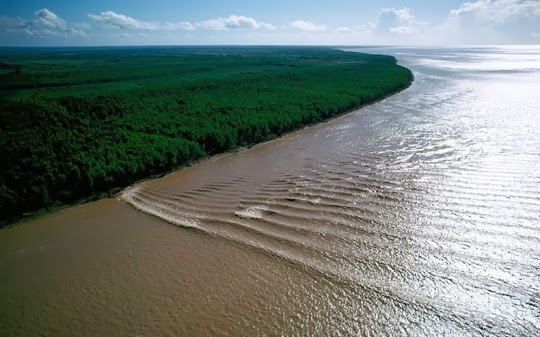
The Pororoca arrives at the Amazon river.

Tidal river bore on the river ribble Lancashire shown along the section of river between the entrance to the River Douglas and Preston.
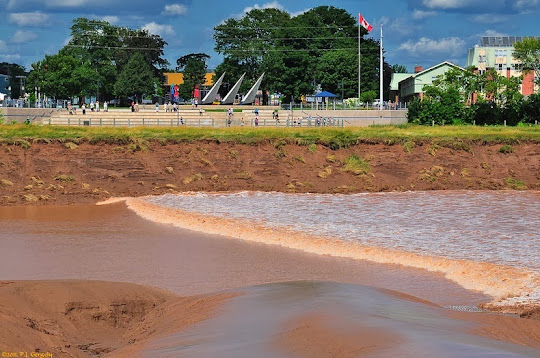
A tidal bore arrives at Fergusson, New Brunswick.
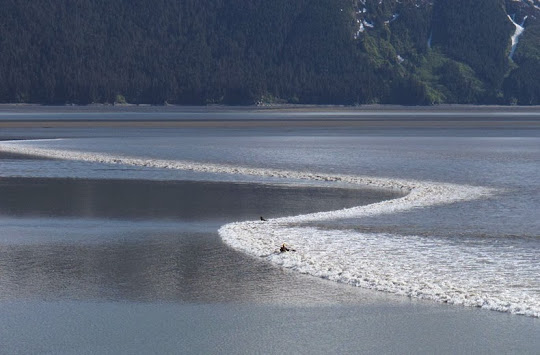
A kayaker rides the biggest bore tide of the summer as it roared into Turnagain Arm south of Anchorage, Alaska, on June 5, 2012.
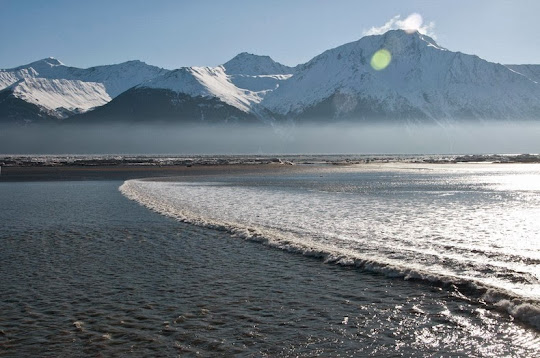
Tidal bore in Turnagain Arm, Alaska

A tidal bore moving up River Mersey in Hale, England.

A crowd of Chinese tourists run away as a tidal bore breaks through the dam by the Qiangtang River in Haining, east China's Zhejiang province on August 31, 2011. About 20 people were injured when they were caught too close to the river while viewing the annual tidal bore.

Policemen and residents run as waves from a tidal bore surge past a barrier on the banks of Qiantang River in Haining, China, on August 31, 2011.
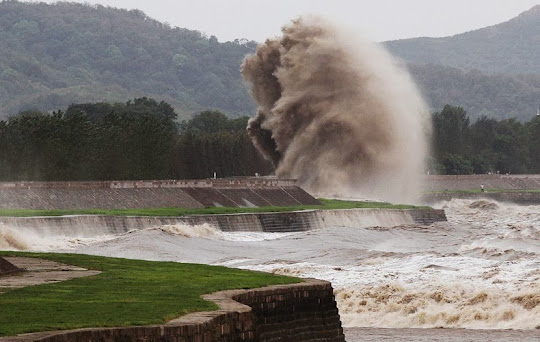
A tidal wave hits a bank along the Qiantang River on August 22, 2013 in Haining, China.

Visitors run away from a tidal bore wave as it surges over a barrier on the banks of Qiantang River, in Hangzhou Zhejiang province, on August 25, 2013.

Surfers enjoy the Severn Bore near Newnham along the River Severn on March 2, 2010 in Gloucestershire, England.
 A view of the Severn Bore, sweeping down the river Severn between Stonebench and Minsterworth, in Gloucestershire, England, on September 3, 1936. At times the waves reached a height of 20 feet.
A view of the Severn Bore, sweeping down the river Severn between Stonebench and Minsterworth, in Gloucestershire, England, on September 3, 1936. At times the waves reached a height of 20 feet.Source
